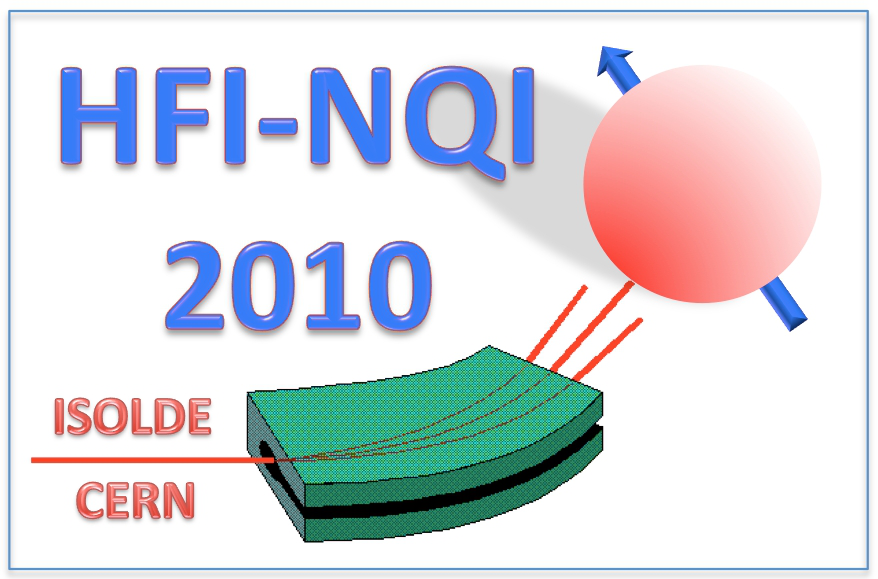Speaker
Mr
Torben Esmann Mølholt
(University of Iceland)
Description
T. E. Mølholt1, R. Mantovan2, H. P. Gunnlaugsson3, K. Bharuth-Ram4, M. Fanciulli2,5, K. Johnston6, Y. Kobayashi7, G. Langouche8, H. Masenda9, D. Naidoo9, S. Ólafsson1,
R. Sielemann10, G. Weyer3, H. P. Gíslason1
1Science Institute, University of Iceland, Reykjavík, Iceland, e-mail: tem4@hi.is; 2Laboratorio MDM-IMM-CNR, Milano, Italy; 3Department of Physics and Astronomy, Aarhus University, Denmark; 4School of Physics, University of KwaZulu-Natal, South Africa; 5Dipartimento di Scienza dei Materiali, Università di Milano Bicocca, Milano, Italy; 6PH Dept, ISOLDE/CERN, 1211 Geneva 23, Switzerland; 7The Institute of Physical and Chemical Research, Wako, Japan; 8Instituut voor Kern-en Stralingsfysika, University of Leuven, Belgium; 9School of Physics, University of the Witwatersrand, South Africa; 10Helmholtz Zentrum, Berlin, Germany.
We have measured 57Fe emission Mössbauer spectra following 50 – 60 keV implantation of radioactive 57Mn+ ( s) at the ISOLDE facility at CERN into MgO single crystals held at 77 – 647 K (Fig. 1). This method allows us to study Fe impurities in concentrations <10-4 at.%. The central part of the spectra (Fig. 1) shows lines from Fe2+ on distorted lattice sites, substitutional sites, and interstitial Fe sites (see [1] for details). The wings of the spectra show what us in focus here; broad distributions of magnetic hyperfine fields up to ~52 T, evidently slowly relaxing paramagnetic Fe3+.
These have been analysed/simulated with an arbitrary number of Blume-Tjon (BT) sextets [2] (here a minimum of five BT-sextets was needed, constrained by various common para-meters). The relaxation rate parameter W is allowed to vary with temperature. This parameter corresponds to a spin-relaxation rate of , where is the energy of the Mössbauer state. The (common) change of the BT-sextets is due to increasing values of W with temperature, which as found to increase to 1.5(9) mm/s (assuming mm/s at 77 K). In this range the line shape of the BT-sextets is dominated by broadening of the individual lines by . Figure 2 shows the relaxation rate obtained in this work compared to the results based on EPR measured relaxation rates of dilute Fe3+ impurities in MgO [3]. A reasonably good correlation between the two sets of data is obtained, demonstrating the possibility of retrieving spin-lattice relaxation rates using Mössbauer spectroscopy without the application of an external magnetic field. Other appli-cations of this technique will be given at this conference [4].
References:
[1] T. E. Mølholt et al. (2010) this conference.
[2] M. Blume and J. A. Tjon, Phys. Rev. 165, 446 (1968).
[3] R. S. de Biasi and P. D. Portella, J. Magn. Magn. Mater., 15, 737 (1980).
[4] H. P. Gunnlaugsson et al. (2010) this conference.
Author
Mr
Torben Esmann Mølholt
(University of Iceland)
Co-authors
D. Naidoo
(9School of Physics, University of the Witwatersrand, South Africa)
G. Langouche
(Instituut voor Kern-en Stralingsfysika, University of Leuven, Belgium)
G. Weyer
(Department of Physics and Astronomy, Aarhus University)
H. Masenda
(9School of Physics, University of the Witwatersrand, South Africa)
H. P. Gunnlaugsson
(Department of Physics and Astronomy, Aarhus University, Denmark)
H. P. Gíslason
(Science Institute, University of Iceland, Reykjavík, Iceland)
K. Bharuth-Ram
(School of Physics, University of KwaZulu-Natal, South Africa)
K. Johnston
(PH Dept, ISOLDE/CERN, 1211 Geneva 23, Switzerland)
M. Fanciulli
(Laboratorio MDM-IMM-CNR, Milano, Italy and Dipartimento di Scienza dei Materiali, Università di Milano Bicocca, Milano, Italy)
R. Mantovan
(Laboratorio MDM-IMM-CNR, Milano, Italy)
R. Sielemann
(Helmholtz Zentrum, Berlin, Germany)
S. Ólafsson
(Science Institute, University of Iceland, Reykjavík, Iceland)
Y. Kobayashi
(The Institute of Physical and Chemical Research, Wako, Japan)
